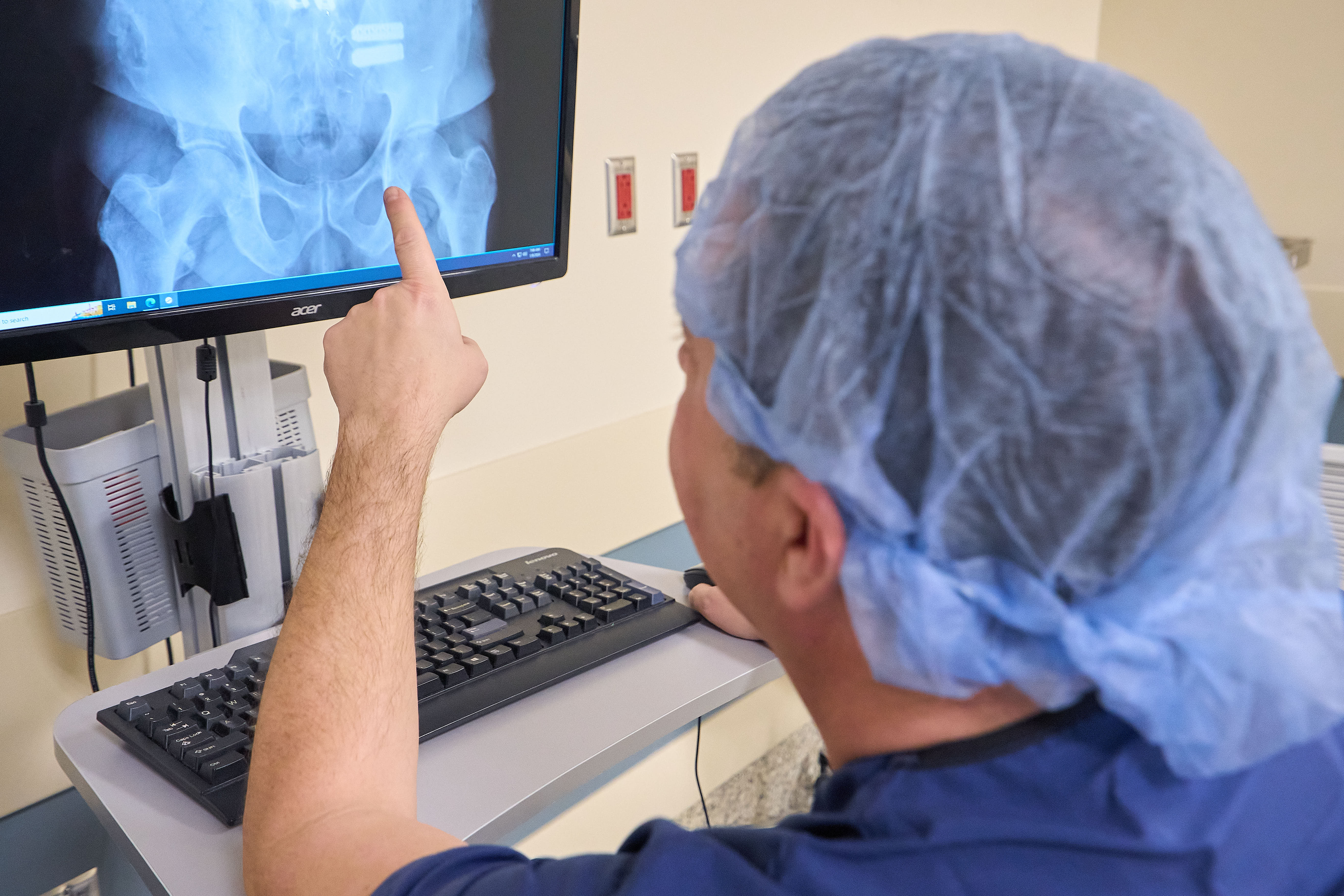 Dr. Aaron Bianco recently completed his 550th sacroiliac (SI) joint fusion procedure using the iFuse Implant System® (iFuse). iFuse, the only SI joint fusion device with multiple RCTs and prospective clinical publications, is used to treat patients experiencing symptoms of sacroiliac joint dysfunction. One of a growing number of surgeons specially trained in this type of procedure, Dr. Bianco was trained to perform the iFuse procedure in 2011, and he has treated patients with SI joint pain from Central New York, neighboring states, and Canada in Syracuse, NY. This milestone underscores his clinical expertise and tenured knowledge of the procedure when it comes to diagnosing and treating patients.
Dr. Aaron Bianco recently completed his 550th sacroiliac (SI) joint fusion procedure using the iFuse Implant System® (iFuse). iFuse, the only SI joint fusion device with multiple RCTs and prospective clinical publications, is used to treat patients experiencing symptoms of sacroiliac joint dysfunction. One of a growing number of surgeons specially trained in this type of procedure, Dr. Bianco was trained to perform the iFuse procedure in 2011, and he has treated patients with SI joint pain from Central New York, neighboring states, and Canada in Syracuse, NY. This milestone underscores his clinical expertise and tenured knowledge of the procedure when it comes to diagnosing and treating patients.
Clinical publications have identified the sacroiliac joint as a pain generator in 15-30%1-4 of chronic lower back pain patients. In addition, the SI joint can be the cause of continued or new onset lower back pain after a lumbar fusion in up to 43% of patients5. It is common for pain from the SI joint to be described as lower back or hip pain. “Although many patients present to physicians with lower back pain, it is important for the diagnosing provider to rule in or out other common sources of pain such as the lumbar spine or even the hip,” says Dr. Bianco “Thankfully, as awareness of the condition grows, more patients are able to receive a comprehensive diagnosis that considers the SI joint as a potential source of their pain.”
“Sacroiliac joint dysfunction can be challenging to diagnose. The diagnosis is not typically made with imaging. Diagnosis and treatment usually include a comprehensive care team that works together for the best interest of the patient,” comments Dr. Bianco. Diagnosis and identification of patients potentially eligible for the iFuse procedure involves starting with a series of hands-on physical exam maneuvers. The most relied upon method to confirm the SI joint as the cause of lower back pain symptoms is to inject the SI joint with a local anesthetic. The injection is delivered using contrast dye under either fluoroscopic or CT guidance to verify accurate placement of the needle in the SI joint. If symptoms are temporarily decreased by at least 50%, it can be concluded that the SI joint is either the source of, or a major contributor to, lower back pain.

Patients with suspected SI joint pathology typically try to manage their pain using one or more non-surgical treatments which can include oral medications such as NSAIDs, physical therapy, sessions with a chiropractor, or visits to pain management for steroid injections or radiofrequency ablation. If these non-operative treatments fail to offer long-term or sufficient relief, that’s when patients may consider surgical intervention with iFuse.
The iFuse ProcedureTM is a minimally-invasive surgery performed at both the SOS Specialists’ One-Day Surgery Center as well as St. Joseph’s Hospital in Syracuse, NY. Typically, the procedure takes approximately one hour to complete and is performed through a small incision on the side of the buttock. It involves Dr. Bianco inserting triangular-shaped titanium implants across the joint to provide immediate stability and long-term fusion.
Once the procedure is completed and patients return home for recovery, they are instructed to rest and keep activity minimal. Dr. Bianco indicates that the majority of his patients see significant improvement in pain, function, and quality of life within six months.6,7 “It is gratifying to help my patients lessen their pain significantly, while also helping them return to common activities of daily living,” commented Dr. Bianco.
“There are many causes of SI joint pain and dysfunction, and it affects a wide demographic of patients, spanning those in their 20s to patients older than 70. We do find that this is a pathology which afflicts more females than males,” commented Dr. Bianco. SI joint dysfunction in female patients may be related to increased stress placed on the SI joint during pregnancy and childbirth. Other causes of SI pain include, but are not limited to, traumatic injury, arthritis, previous lumbar fusion, or infection.
Dr. Bianco and the other healthcare providers at Syracuse Orthopedic Specialists have been specifically trained on the diagnosis and treatment of SI joint dysfunction. They are currently accepting new patients who are interested in a complete evaluation of their lumbar spine, hips, and sacroiliac joints. Click to find out more information https://www.sosbones.com/sacroiliac-joint-fusion or contact Syracuse Orthopedic Specialists at 315-251-3232 to schedule an appointment.
1 Bernard TN, Kirkaldy-Willis WH. Clinical Orthopedics and Related Research. 1987;217:266–80.
2 Schwarzer AC, Aprill CN, Bogduk N. Spine. 1995;20:31–7.
3 Maigne JY, Aivaliklis A, Pfefer F. Spine. 1996;21:1889–92.
4 Sembrano JN, Polly DW. Spine. 2009;34:E27–32.
5 DePalma M, Ketchum JM, Saullo TR. Pain Medicine. 2011;12:732–9.
6 Polly DW, et al. and the INSITE Study Group. Neurosurgery. 2015;77:674–91.
